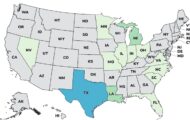The CDC’s Weekly Morbidity and Mortality Report Note’s From the Field this week focuses on a Clostridium perfringens outbreak at a catered lunch in Connecticut in 2016. Nineteen people out of the fifty who attended the lunch were sickened. This outbreak was not shared with the public.

The Connecticut Department of Public health was notified about this outbreak in September 2016. They started gathering information, including asking those who attended the event fill out an online survey.
Patients started experiencing abdominal pain and/or diarrhea about 24 hours or less after attending the lunch. Most of the patients reported diarrhea, abdominal pain, and headache. The median interval from lunch to illness onset was 5.3 hours.
Analysis of the food exposures reported by 16 ill and 10 well respondents found the outbreak was associated with the beef dish served at the lunch. All of the 16 ill respondents ate that dish. Eating cake approached significance, but all 10 people who ate the cake also ate the beef.
The caterer had started making all of the food the day before the lunch. Meats were partially cooked and then marinated in the refrigerator overnight [Editor’s note: This practice is not safe and increases the risk of food poisoning.] In the morning, the meats were sautéed 2 hours before the lunch. No leftover foods were available for testing.
When public health officials inspected the caterer’s facility, they found that the limited refrigerator space was full of stacked containers that were completely filled with cooked food. That means it is likely the food stayed in the danger zone of 40°F to 140°F for a long period of time. That temperature range is conducive to bacterial growth. Inspectors also found that the caterer had washed disposable gloves for reuse, and had used a porous wood chopping block.
The caterer’s four employees reported no recent illness. Stool samples from the workers and from four luncheon attendees were negative for norovirus, Campylobacter, E. coli O157, Salmonella, and Shigella. All eight specimens were tested at the Connecticut State Public Health Laboratory and then sent to the Minnesota Department of Heath Public Health Laboratory for additional testing.
Seven of the specimens (four from the employees and three from attendees) were culture-positive for Clostridium perfringens, and specimens from all attendees contained C. perfringens enterotoxin. PFGE electrophoresis of C. perfringens isolates from the sept immense found no matches among attendee isolates, but demonstrated a single matching pattern between two food worker specimens.
The report states that “C. perfringens outbreaks are typically associated with improper cooling or inadequate reheating of contaminated meats, which might have occurred with the beef dish.” The caterer was advised about using adequate refrigeration and employing best food safety practices for cooling foods.
Containers used to cool food should be made from metal, not plastic. Containers should not be filled to depths exceeding two inches. Containers should not be stacked in the fridge during the cooling time. And hot food should be ventilated while it is cooling.
About 1,000,000 people are sickened every year in the United States from Clostridium perfringens food poisoning. Fewer than 1,200 illnesses are reported every year. Testing for Clostridium perfringens is not routine for foodborne illness outbreaks. Testing for this pathogenic bacteria should be employed when improper food handling and cooling, improper reheating, and poor temperature maintenance of meat are identified.




